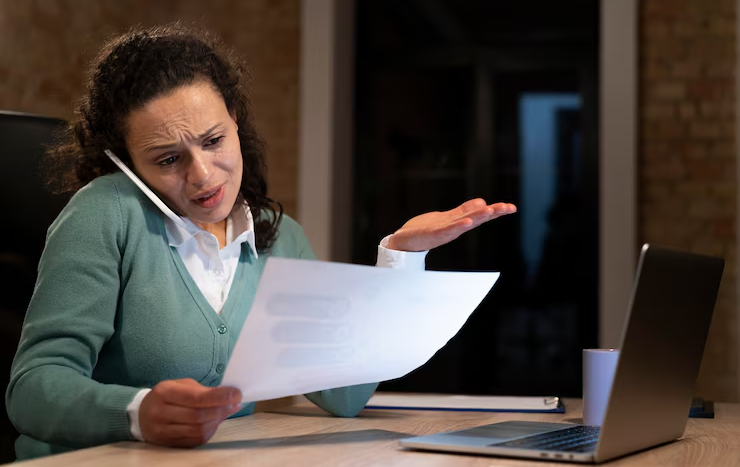8 Important Steps to Take After Water Damage to Your House
Quick Response to Water Damage – Key to Home Safety and Recovery
Water damage in your home can be unsettling and potentially devastating. Acting swiftly and effectively is crucial to mitigate the impact, prevent further damage, and ensure your home’s quick recovery. This guide outlines the essential steps every homeowner should take immediately following water damage. By following these steps, you can protect your property and regain control of your living environment.
Water damage can occur in various ways, whether through natural disasters, faulty appliances, or plumbing mishaps. Regardless of the source, the key to recovery lies in your response time. Faster action can significantly reduce the severity of the damage, often saving thousands in potential repair costs.
Interesting Fact: Did you know that water can begin to cause mold growth in your home in as little as 24 to 48 hours after damage occurs? That’s why quick drying and dehumidification are so critical.
Here are a few key points to remember
Stop the Water: Identify and halt the source of the leakage as soon as possible.
Safety First: Ensure all electrical systems are turned off to prevent accidents.
Assess the Damage: Document all impacts for your insurance claim.
Another critical aspect to consider is the impact on your home’s structure. Water can weaken foundations, because warping of wood, and lead to persistent moisture problems if not addressed promptly.
Interesting Fact: Water damage insurance claims are among the most frequent filed by homeowners, yet many discover too late that not all types of water damage are covered under standard policies.
This guide is designed to provide clear and straightforward advice to help you navigate the aftermath of water damage. With prompt action and the right knowledge, you can restore your home to safety and prevent future incidents.
How to Find and Stop Water Leaks in Your Home
When you find water damage in your house, the first step is to locate where the water is coming from and stop it. This quick action can save your home from more damage and costly repairs. Let’s go through the steps you need to take to find and stop water leaks, whether they come from pipes, appliances, or other sources.
Step 1: Check Your Appliances
Start with the common culprits like washing machines, dishwashers, and water heaters.
Look for any signs of leaking, such as water pooling or dampness around these appliances.
Step 2: Inspect Pipes and Faucets
Examine pipes under sinks, in the bathroom, and any exposed piping around your home for any dripping or wet spots.
If you find a leak, turn off the water supply to that area immediately.
Step 3: Look at Ceilings and Walls
Water stains or mold on ceilings and walls can indicate leaks. Follow any stains to their source to find where the leak is coming from.
Quick Tip: Always keep a flashlight handy to check dark areas like basements or closets.
Here are a few easy tips to handle leaks from different sources
For a leaking faucet: Tighten the faucet with a wrench and check if it stops the leak. If not, you may need to replace the washer inside.
For a broken pipe: Turn off the main water supply immediately and call a professional plumber.
Interesting Fact: A small drip can waste up to 20 gallons of water a day, so fixing leaks quickly is important for saving water and money.
Remember These Points
- Always know where your main water shut-off valve is located.
- Regularly check places where water lines are connected to appliances.
- If unsure how to fix a leak, it’s best to call a professional.
By knowing how to identify and stop the source of water quickly, you can protect your home from more severe water damage.
Stay Safe and Document Everything after Water Damage
When your home suffers from water damage, keeping your family safe and documenting the damage are crucial steps. Here’s how to handle these important tasks with care.
Ensure Safety First
Before doing anything, make sure it’s safe to stay in your home. Water can make buildings dangerous, so here’s what to do to keep safe:
Turn off Electricity: Always turn off the electricity if water has reached your outlets or wiring. If you can’t reach your breaker box safely, call an electrician.
Wear Protective Gear: When walking through water-damaged areas, wear rubber boots and gloves to protect against dirty water, which can have harmful bacteria.
Avoid Contaminated Water: Stay away from water that may be contaminated by sewage or chemicals. It’s not safe.
Document the Damage
After making sure it’s safe, start documenting the damage. This is very important for your insurance claim.
Take Photos: Use your phone or camera to take clear pictures of all the damaged areas and items. Do this before you start cleaning up?
Make a List: Write down everything that’s damaged. Include things like furniture, electronics, and personal items. The more details you provide, the better.
Interesting Fact: Water damage is one of the top reasons people file insurance claims for their homes.
Tips for Documenting Damage
Be Thorough: The more information and photos you have, the smoother your insurance claim will go.
Keep Records: Save receipts for any repairs or replacements. This helps prove your expenses to the insurance company.
By following these steps, you can ensure your safety and prepare a strong insurance claim. Remember, dealing with water damage can be stressful, but taking these actions will help you manage the situation better and faster.
Contact Your Insurer and Start the Cleanup after Water Damage
After water damages your home, it’s important to talk to your insurance company and begin cleaning up. Here’s how to handle these steps smoothly and efficiently.
Contacting Your Insurance Provider
Talking to your insurance provider right after damage occurs is essential. Here’s how to do it right:
Gather Information: Before you call, have your policy number ready, and details about what happened.
Take Notes: Write down what you talk about with your insurance. This includes the name of the person you spoke with and any decisions or advice they give you.
Questions to Ask Your Insurer:
- What does my policy cover?
- How long do I have to file a claim?
- What documents do I need to provide?
Begin Water Removal and Drying
If the water damage isn’t too severe, you might be able to start cleaning up yourself. If it’s a big job, you might need professional help.
DIY Tips for Water Removal
Use a Wet Vacuum: You can rent a wet vacuum to suck up water from carpets and floors.
Air It Out: Open windows and use fans to dry out the rooms if the weather allows.
When to Call Professionals
If there’s a lot of water, or if it’s dirty water, calling a professional water restoration service is safer.
They have the right tools and skills to dry out your home quickly and safely.
Interesting Fact: Acting fast can prevent mold growth, which can start within 24 to 48 hours after water damage.
By understanding how to communicate with your insurance and knowing when to start DIY cleanup or call in the pros, you can handle water damage more effectively. This approach helps you get back to normal life faster while ensuring your home’s safety and integrity.
Cleaning Up and Fixing Your Home after Water Damage
Once you remove all the water from your home, it’s time to clean and fix any damage. This guide will help you through the steps of cleaning, preventing mold, and repairing your home.
Cleaning and Disinfecting Your Home
After water damage, it’s important to clean and disinfect your home properly to prevent health problems.
Use the Right Cleaners: Pick cleaners that kill germs and are safe for the surfaces in your home.
Focus on All Surfaces: Clean floors, walls, and anywhere water touched. Don’t forget hidden spots where mold could grow.
Preventing Mold Growth
Mold can be a big problem after water damage because it can cause health issues.
Dry Everything Quickly: Use fans and dehumidifiers to dry out rooms fast. The quicker you dry things, the less chance mold has to grow.
Check for Mold: Look for signs of mold in damp areas. If you see mold or smell a musty odor, clean the area with a mold-killing solution.
Restoration and Repair
Fixing your home after water damage can be a big task. Here’s how to handle repairs and choose the right help.
Assess the Damage: Look at what needs fixing—like warped floors or damaged walls.
Choose Professionals Carefully: Find experienced and licensed professionals to make sure repairs are done right.
Choosing the Right Restoration Service
Check Their Credentials: Make sure they have the right licenses and good reviews.
Ask for References: Talk to other people who have used their services to see if they were happy with the work.
Interesting Fact: Quick response to water damage can greatly reduce repair costs and recovery time.
Cleaning and repairing your home after water damage doesn’t have to be overwhelming. By following these steps, you can tackle each part of the process effectively, ensuring your home returns to a safe and comfortable place for your family.
How to Protect Your Home from Water Damage
Preventing future water damage is crucial for keeping your home safe and dry. Here are some easy steps to help you avoid water problems before they start.
Maintain Your Home Regularly
Regular checks and maintenance can prevent many types of water damage.
Inspect Pipes and Faucets: Look for leaks or weak spots in your plumbing at least twice a year.
Clean Gutters and Downspouts: Make sure water can flow freely away from your house. Clean your gutters in the spring and fall.
Make Improvements
Sometimes, making small changes can protect your home from big water problems.
Install Water Sensors: These devices can alert you to leaks early, before they cause major damage.
Upgrade Appliances: Replace old washers or dishwashers that might leak with new, more reliable models.
Conclusion: Act Fast and Be Prepared
Remember, the key to dealing with water damage is to act quickly. Fast action can save your home from serious damage and expensive repairs.
Stay Informed: Knowing what to do when water damage happens can make a big difference.
Be Prepared: Have a plan for what to do if you find a leak or flood in your home.
Encouragement for Homeowners
You can handle water damage effectively if you’re prepared and act quickly. Use this guide to help you feel confident in protecting and fixing your home.
By taking these preventive steps, you can reduce the risk of water damage and feel more secure in your home. Remember, a little preparation goes a long way in keeping your home safe from water harm.
Protect Your Investment with Inter Property Phuket
At Inter Property Phuket, we understand the challenges that come with property management, especially after events like water damage. Our dedicated team works tirelessly to ensure your property is well-maintained and swiftly restored, should any issues arise.
With our unique Net Guarantee, you can rest assured of steady rental income, even in unforeseen circumstances. Trust us to handle everything from emergency repairs to regular maintenance, making property management in Phuket hassle-free. Partner with us and experience the peace of mind that comes from having a dedicated villa manager and 24/7 support for your property. Your investment is safe with us.







I don’t think the title of your article matches the content lol. Just kidding, mainly because I had some doubts after reading the article.
Your article helped me a lot, is there any more related content? Thanks!
Can you be more specific about the content of your article? After reading it, I still have some doubts. Hope you can help me.
I don’t think the title of your article matches the content lol. Just kidding, mainly because I had some doubts after reading the article.